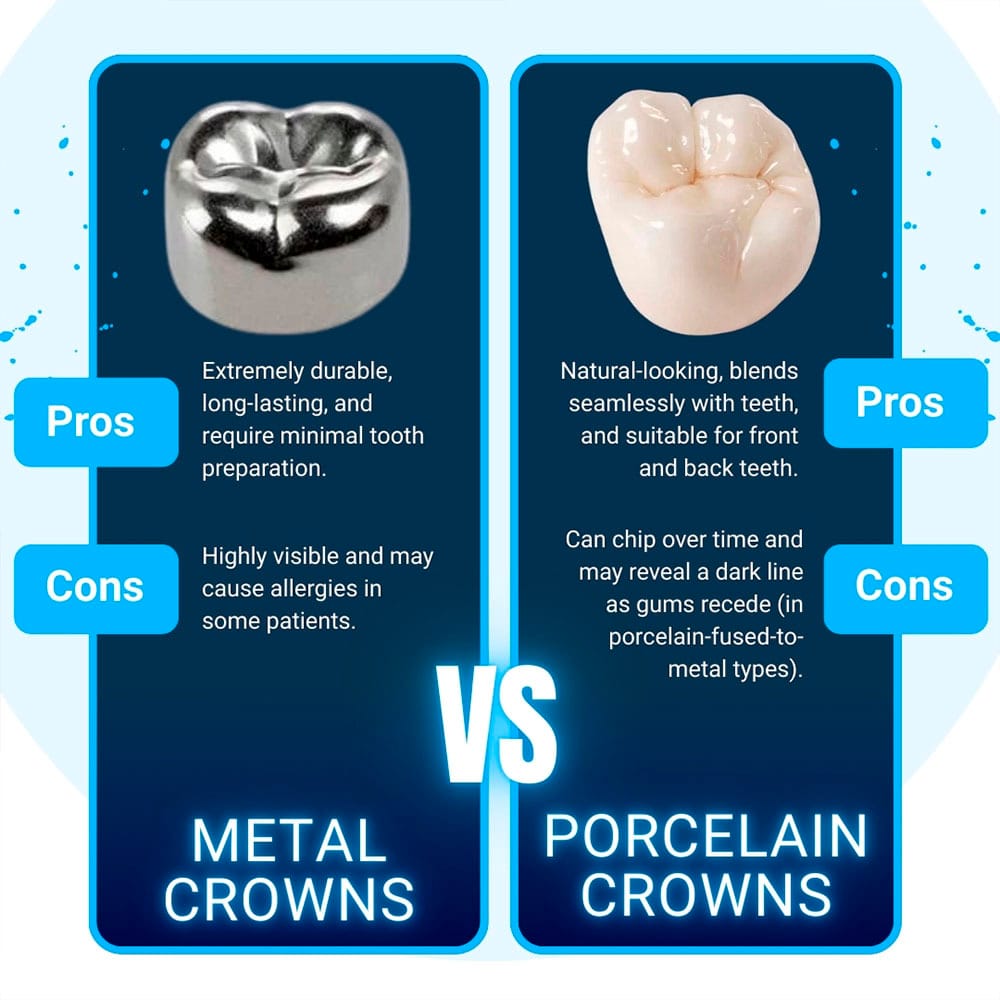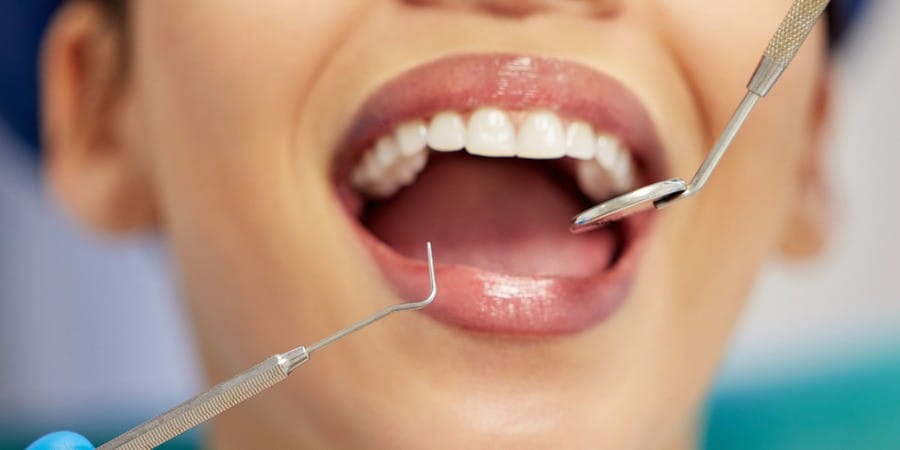In this article, learn more about metal and porcelain crowns, how they are made, and the pros and cons of each choice.
Metal Crowns
Traditionally, crowns were made from metal, which could be precious metal or non-precious metal alloys. Crowns are still made from these materials; some are made from stainless steel. One popular option still is to have a precious metal substructure covered with porcelain. This option is called a porcelain fused to metal crown.
Precious and Non-precious Metal Alloy Crowns
Various metals can be used to make metal alloy crowns to ensure they are durable and hard-wearing. Each metal crown is custom-made to fit the tooth exactly and is bonded permanently in place. The metal crown is polished to a high sheen but is highly visible in the mouth.
Therefore, these crowns tend to be used for teeth that are less visible, such as larger back teeth. They are ideal for these teeth because they are hard-wearing, and gold crowns will not damage the opposing teeth. Non-precious alloy crowns are cheaper than precious alloy crowns with a higher gold content.

Read more: What Happens During a Dental Crown Procedure?
Stainless Steel Crowns
Stainless steel crowns tend to be premade, so they are affordable and adjusted by the dentist to fit over the tooth as best they can. These crowns are frequently used to protect children’s primary teeth because they are a cost-effective solution to cover a tooth that will fall out soon. The stainless steel crown remains in place until the primary tooth loosens and falls out to make room for the adult tooth underneath.
It’s important to protect children’s primary teeth and to ensure they aren’t lost too soon, as otherwise, this can affect the development of their adult teeth. When a primary tooth is decayed or infected and needs removing before the adult tooth is ready to erupt, there is a real risk that the adjacent teeth will move into the gap.
As a result, the adult tooth becomes overcrowded or cannot erupt properly when it eventually comes through.
Read more: The 8 Best Alternatives to Invisalign
Porcelain Fused to Metal Crowns
A porcelain fused to metal crown (PFM) consists of a thin metal substructure that is covered with porcelain. It often has a small metal collar around the back of the tooth, so it isn’t visible in the mouth. The porcelain used to cover the metal crown is quite opaque, which is then covered with a more translucent layer to create a lifelike tooth.
PFM crowns were extensively used for decades and still produce good results. However, as the restoration ages and the gum around the crown begins to recede, it can expose the edge of the crown. The porcelain is thinner around the edge, and as a result, a thin gray line can develop that looks unsightly. Although it is possible to create PFM crowns with a porcelain margin, all-porcelain crowns are becoming more the norm these days.
Porcelain fused to metal crowns are an affordable choice, and the exact price can depend on the metal alloy used underneath. A precious metal alloy will cost more than an alloy containing a high amount of nickel.
Porcelain Crowns
A porcelain crown doesn’t need to contain any metal, so it is entirely made from strong ceramic materials. Several different materials can be used; one is a ceramic called lithium disilicate, such as e.max, while the other is zirconia. The third choice is to have a ceramic crown made in your dental office while you wait.
A porcelain crown can be a good choice if you have metal allergies or would prefer not to have any metal in your mouth.
Read more: 5 Tips for a Fast and easy Post-Gum Graft Recovery
Same-Day Crown
A porcelain crown that is made in your dental office on the same day, so it is ready to fit soon afterward. This crown is milled from a solid block of porcelain using a digital scan of your tooth, so it is extremely precise. It is hand-finished and ready to bond in your mouth.
Lithium Disilicate Crowns
If aesthetics are a major concern, such as when restoring a front tooth, consider having a lithium disilicate crown. These crowns are extremely lifelike and have excellent translucency, making them look exactly like real teeth. The color can be closely matched to your remaining natural teeth, resulting in a beautiful crown that appears real. Lithium disilicate is strong and durable; the crown should look good for years.
Zirconia Crowns
Many of today’s crowns are made from zirconia, a material with extremely high flexural strength. They are stronger than lithium disilicate. The latest generation of zirconia crowns look extremely good and are suitable for use anywhere in the mouth, especially when restoring back teeth. A zirconia crown can even be used when bruxism is an issue.
Bruxism is when someone clenches and grinds their teeth. Normally, this will damage teeth significantly and can even lead to tooth loss. A special type of zirconia is designed for this situation, and the zirconia is very kind to the opposing teeth, so it will not damage them.
Read more: Do You Need a Root Canal? Seven Telltale Symptoms
How to Make Your Decision
To a certain extent, your decision will be determined by the position of the crown in your mouth and your budget. If you want a budget-friendly option, choose a metal alloy crown or a PFM. However, it’s worth remembering that the cost of a gold crown depends on the market price of gold, so you may find another option that will suit you better.
If you simply want the best quality crown, opt for a zirconia crown when restoring a back tooth and a lithium disilicate crown when restoring a front tooth. Your dentist can discuss all these options with you, show you samples of each, and provide the estimated costs.

